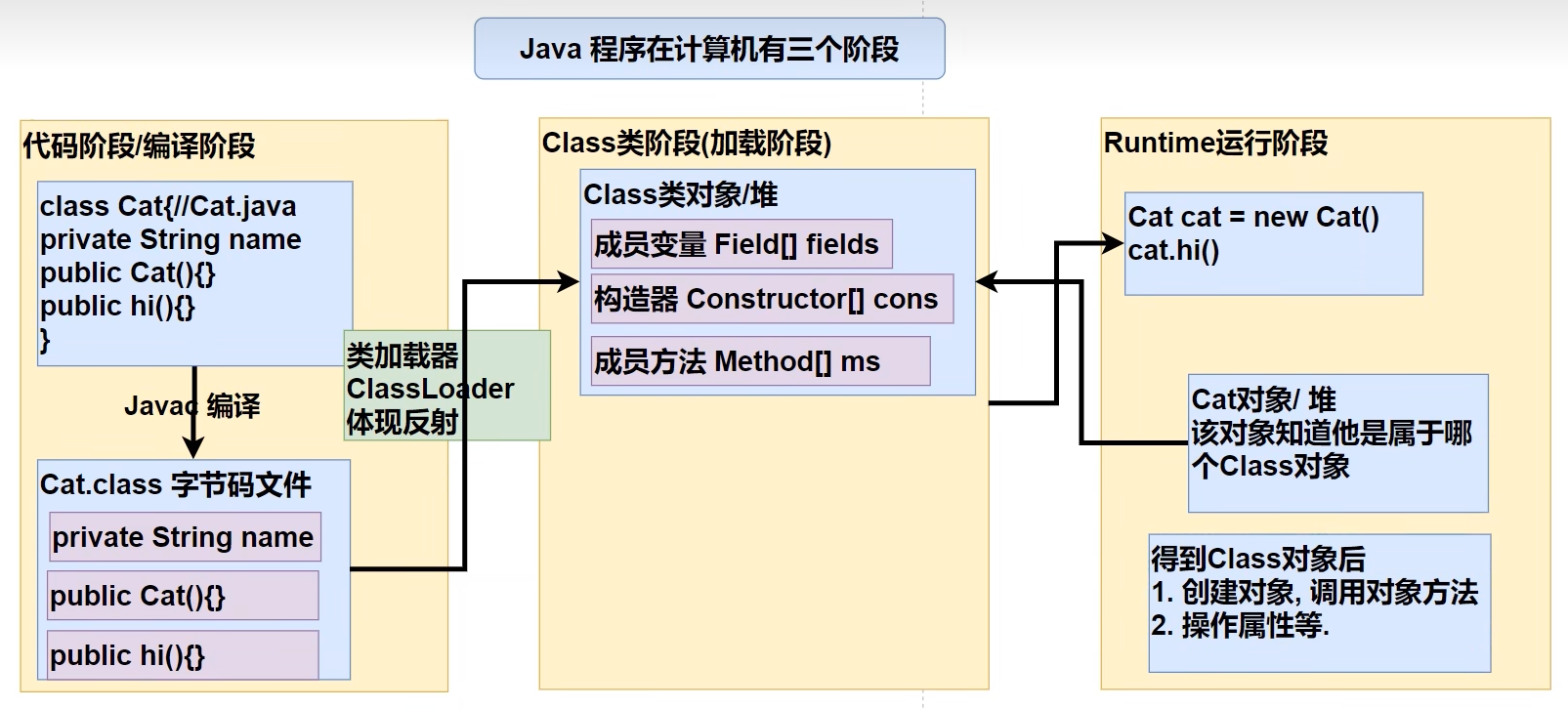Java 反射 (一) 反射机制

反射
一.反射机制
1.一个需求引出反射
请看下面的问题 1.根据配置文件 re.properties 指定信息,创建对象并调用方法
classfullpath=com.hspedu.Catmethod=hi
思考:1.使用现有技术,你能做的吗?
2.这样的需求在学习框架时特别多,即通过外部文件配置,在不修改源码情况下,来控制程序,也符合设计模式的 ocp 原则(开闭原则)
3.快速入门 com.gbx.reflection.questionReflectionQuestion.java
1.反射机制允许程序在执行期借助于 Reflection API 取得任何类的内部信息(比如成员变量,构造器,成员方法等等),并能操作对象的属性及方法。反射在设计模式和框架底层都会用到
2.加载完类之后,在堆中就产生了一个 Class 类型的对象(一个类只有一个 Classi 对象),这个对象包含了类的完整结构信息。通过这个对象得到类的结构。这个对象就像一面镜子,透过这个镜子看到类的结构,所以,形象的称之为:反射
p 对象-->类型 Person 类对象 cls-->类型 Class 类
2.反射原理图

3.反射相关类
Java 反射机制可以完成
在运行时判断任意一个对象所属的类
在运行时构造任意一个类的对象
在运行时得到任意一个类所具有的成员变量和方法
在运行时调用任意一个对象的成员变量和方法
生成动态代理
反射相关的主要类
java.lang.Class:代表一个类,Class 对象表示某个类加载后在堆中的对象
java.lang.reflect.Method:代表类的方法,Method 对象表示某个类的方法
java.lang.reflect.Field:代表类的成员变量,Field 对象表示某个类的成员变量
java.lang.reflect.Constructor:代表类的构造方法,Constructor 对象表示构造器
这些类在 java.lang.reflection 包内
4.反射调优
4.1 反射的优缺点

反射调用优化-关闭访问检查
Method 和 Field、Constructor 对象都有 setAccessible()方法
setAccessible 作用是启动和禁用访问安全检查的开关
参数值为 tue 表示反射的对象在使用时取消访问检查,提高反射的效率。参数值为 false 则表示反射的对象执行访问检查


版权声明: 本文为 InfoQ 作者【浅辄】的原创文章。
原文链接:【http://xie.infoq.cn/article/1e61d30f3863fff6eeaa01e1a】。文章转载请联系作者。










评论